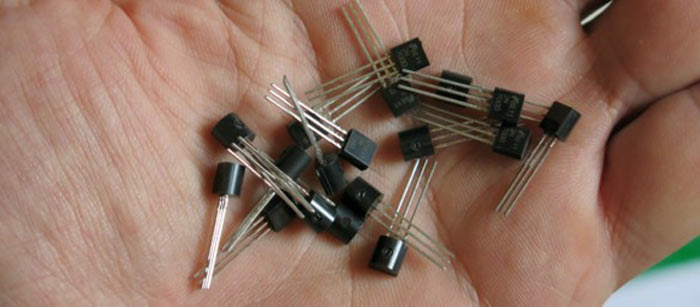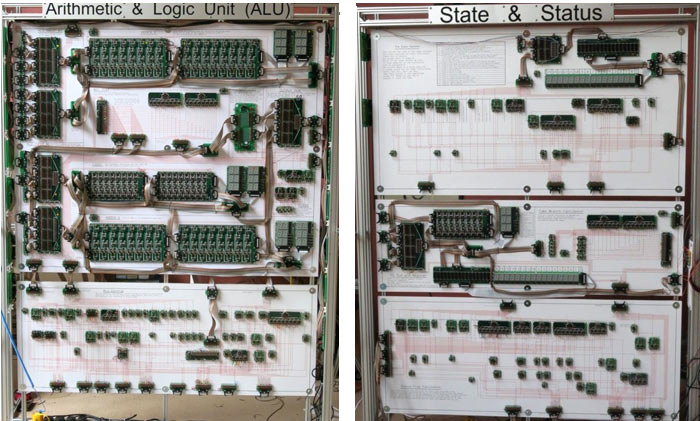An extraordinary handmade CPU is on exhibition at the Centre for Computing History in Cambridge, England. The 16-bit 'chip', if the term isn't too jarring, is made from 42,000 hand-soldered transistors, weighs half a ton, and measures 10m long and 2m tall. As reported by The Register, the 'Megaprocessor' is gargantuan compared to even the ancient Intel 8086 CPU, which measured 33mm2.

James Newman's Megaprocessor was born of a desire to learn about transistors and computer architecture. Newman told The Register that what started as a curiosity project, simply "got out of hand". On the Megaprocessor home page Newman muses that "Computers are quite opaque, looking at them it's impossible to see how they work." As we can't physically shrink ourselves to walk inside a silicon chip, the Megaprocessor has been built big enough for folk to walk around it.
You can see in the main picture above, that Newman has separated the seven major functional parts of a CPU into discrete sections such as; General Purpose Registers, Arithmetic and Logic Unit (ALU), Control & I/O, Memory, and more. With the scale of everything else I was surprised to hear that the Megaprocessor burns only about 500W, mostly for powering the LEDs. Its max clock speed is just 8KHz but Newman usually clocks it down to 1KHz, so observers can more easily see data travel through the CPU, indicated by the LED activity.

We mentioned above that the processor uses about 42,000 transistors. Apparently, most of those are there to support the 10,500 LED data tracers built into the CPU, which are essential for its visual CPU task execution demonstrations.
In other fun facts, Newman took about four years to construct the Megaprocessor, soldering about 1,000,000 joints, and spending roughly £40,000 in the process. At the end of the video, embedded above, you can see the Megaprocessor put to good use - to play a game of Tetris.














